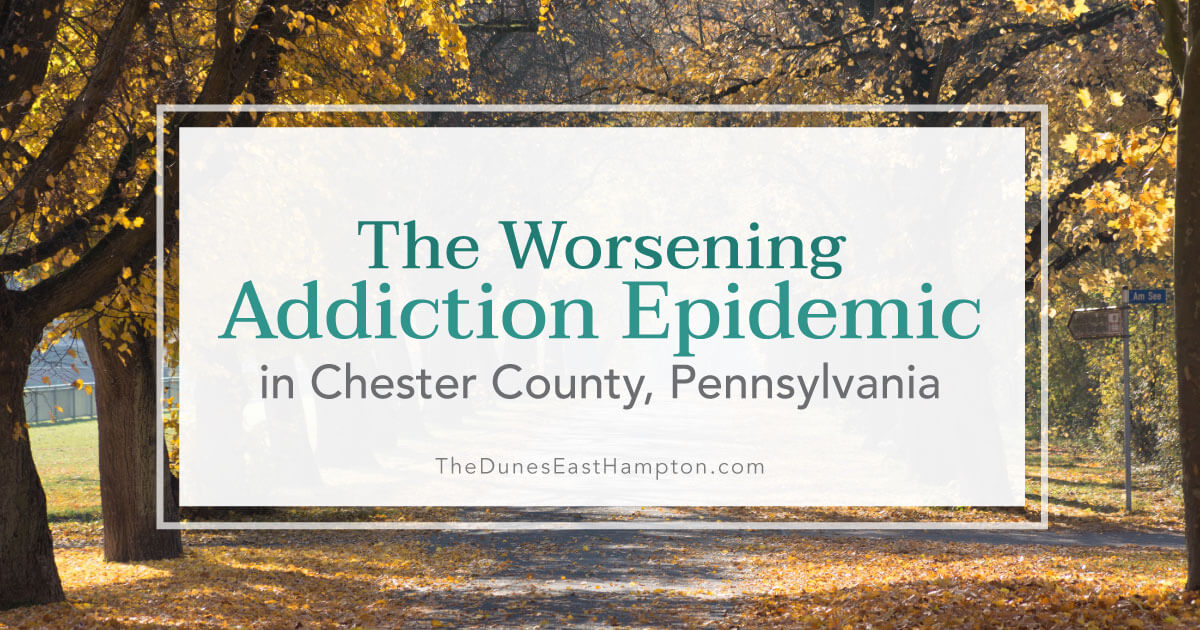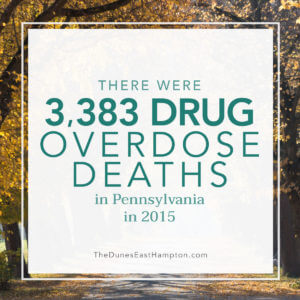
Addiction can strike anywhere, in any community, and have negative effects that spiral families out of control. In recent years, heroin use and seriously life-threatening addictions have become more common in even the most affluent of communities. Chester County is learning this first-hand with a dramatic rise in the cases of drug abuse, addiction, overdoses, and deaths due to the Pennsylvania addiction epidemic.
In 2014, Chester County made headlines for a huge drug bust involving a Mexican cartel operating out of the county. The cartel is infamous for its brutality and willingness to kill anyone who becomes a problem, including law enforcement personnel and judges. The bust was the largest drug prosecution in the county, as the cartel has used the Chester County as a hub for the last 20 years.
It’s a story that you might expect to come out of Chicago, New York, or LA, but Chester County drug bust is fighting the drug epidemic right along with those urban areas. From a demographic standpoint, the county is striking – it has the highest income in the state and the 24th highest in the nation. Compared to the national poverty rate, which is 14.5%, the county’s numbers – at 6% – are much lower.
The Pennsylvania addiction epidemic exemplifies that addiction patterns are changing, and it’s becoming clearer by the day that assumptions about addiction need to change as well. Perhaps more startling is that the crisis is getting substantially worse and is affecting rural areas like Chester County sharply.
The Pennsylvania Addiction Epidemic
 The county is close to Philadelphia, a major metropolitan area and a prime entry point of illegal drugs into the United States. County residents have been dealing with widespread prescription drug abuse in the area, leading to heroin addiction. The cartel’s presence indicates that the area has also been a major hot spot for cocaine. Unlike areas where health providers and law enforcement officials are tackling one main substance, Chester County is in a battle against a variety of the deadliest ones.
The county is close to Philadelphia, a major metropolitan area and a prime entry point of illegal drugs into the United States. County residents have been dealing with widespread prescription drug abuse in the area, leading to heroin addiction. The cartel’s presence indicates that the area has also been a major hot spot for cocaine. Unlike areas where health providers and law enforcement officials are tackling one main substance, Chester County is in a battle against a variety of the deadliest ones.
As the numbers come in from year to year, it’s apparent that the problem is worsening. The county displays some of the most worrisome local trends, but the state overall is also suffering from drug addiction and related deaths. There were 3,383 drug overdose deaths in Pennsylvania in 2015 – a 23.4% increase from 2014. Of those deaths, 55% of the victims had heroin in their systems.
Advocacy in Chester County
If you look to the face of the current addiction epidemic, you will find that people from all walks of life have succumbed to opioid and heroin addiction, and many never consciously intended to end up in this situation. People recovering from surgeries and trying to heal from injuries find themselves addicted to opioids. People seeking relief from pain – not looking for a high – often find themselves falling victim to the cycle of addiction without purposely abusing the drug. Chester County residents suffering fatal and life-threatening overdoses range from teenagers to senior citizens up to 70 years old.
People in this boat need prescription drug abuse treatment to recover.
In 2014, there were 54 overdose deaths in the county. The pattern held throughout 2015, totaling 55 deaths that year. It’s important to note that the county coroner did not chart opioid presence in every death investigation, so opioids may have played a role in numerous other drug deaths aside from overdoses.
Few Recovery Options for Addicts
Mothers, in despair from losing children to addiction, have taken up the cause and are working to break cycles of addiction and increase awareness. Advocates in the county pushed for a Good Samaritan law to encourage friends of addicts to seek help when someone they know overdoses. Before this law, users were afraid to seek emergency help for overdosing addicts because they assumed that they would face criminal charges for being involved in drug-related activities. The Good Samaritan law offers amnesty to anyone who calls 911 to report an overdose so they can help others without fear of criminal charges.
While the Good Samaritan law and the availability of Naloxone have helped curb some deaths, the drug epidemic seems to be getting worse. New initiatives have saved an estimated 1,600 lives in just two years, but those 1,600 people left the hospital still addicted to drugs and without the resources that they needed to recover.
The Pennsylvania addiction epidemic doesn’t appear to be slowing down in Chester County nor in the rest of the state. It’s vital for residents to understand the risks, as awareness is crucial to stemming the tide of drug addiction. Proper drug addiction treatment options should be available for suspected overdose patients.







